New Product Design & Experiments (Middy)
Product Strategy. User Research. UX Design. Prototyping. Specifications.
SEEK wanted to offer a mid-tier job ad product to Hirers - that filled the unmet demand between the existing Standard and Premium tiers. I led the Design workstream for a series of design experiments, across a period of 3 months. Through this, we achieved 11% adoption of the new product, and identified an additional $4M revenue opportunity - clearly showing the impact that design has on company revenue.
-
Experiment planning: Each experiment was focused on understanding how varying a single key element impacts Hirer purchase behaviour - and therefore, company revenue. These included:
Number of product choices provided to users
Visibility of Product Names and type of Product Names used
Value propositions highlighted, including potential reach to Candidates
Design-Test-Learn (+ repeat!): For each experiment, I worked in close collaboration with a Product Manager to define what we were looking to test, and which market segments we were rolling this out to. This informed the designs which focused on varying the key element identified. I’d then work closely with Engineering to handoff and get this into build.
Across 3 experiments, we drove 10%, 8.5% and 11% adoption of the new mid-tier product, respectively. This allowed us to identify the key variations that directly impacted purchase behaviour, and company revenue.
Scaled roll out: The learnings across the experiments were combined to drive further optimisation, and presented to leadership - allowing greater confidence across the company in rolling this new product out to all Hirers across all markets.
-
Current State Research via Stakeholder Interviews - I interviewed 10 Product Designers and Product Managers working across the various products at SEEK, to understand their requirements and challenges. This showed me that 1) there were product-specific requirements that were different across teams, but needed a unified approach moving forward, and 2) designers were getting frustrated with the level of manual rework needed to create responsive and consistent designs across the team.
Co-Designing the Design System with Engineering input - Through analysis of the product page, and stakeholder interviews, I broke down the product page into panel, sections, elements and their variants. To ensure that the Design System was compatible with Engineering requirements, we had regular meetings with Engineers through the design exploration phase. This close collaboration was crucial.
Building the Interactive Component Library in Figma - To take the design system one step further, I turned every single component into into an interactive library, with a central ‘control panel’ in Figma. This gives all designers a single view of components and their variants, while making it easy for them to visually mix and match.
Build - I stayed close through the build phase, providing engineers with real-time support or design iterations to allow them to progress quickly.
Roll out - This was rolled out across product, design and engineering teams within 6 weeks. To support this, I created a self-serve user guide, ran 1:1 onboarding sessions, and presented this at multiple leadership reviews.
-
Drove $4M additional revenue opportunity
Drove 10% / 8.5% / 11% adoption of new product through experimentation
Increased on-page engagement by 23%
Role
Product Strategy ~
User Research ~
UX Design ~
Prototyping ~
Specifications ~
Product Strategy ~ User Research ~ UX Design ~ Prototyping ~ Specifications ~




